Have you ever walked into your basement only to be greeted by a pool of water? If so, you’re probably all too familiar with the frustration and headache a leaking basement can cause. Not only is it a nuisance, but it can also lead to serious damage to your home if left unchecked.
The good news is that there are steps you can take to seal or fix your leaking basement. By taking the time to identify the source of the leak and making the necessary repairs, you can help keep your basement dry and prevent further damage to your home.
So don’t wait any longer. Get started fixing that leaky basement today.
10 Must-know Tips for Fixing a Leaking Basement:
A leaky basement can be a big problem for any homeowner. Not only can it cause damage to your belongings, but it can also lead to mold and mildew growth.
Left unchecked, a leaking basement can even jeopardize the structural integrity of your home. Fortunately, there are a few simple steps that you can take to fix a leaking basement.
Here are 10 must-know tips:
1. Start by identifying the source of the leakage
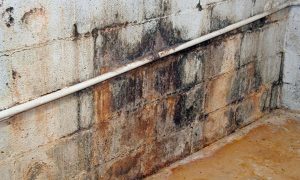
The first step to take when trying to fix a leaking basement is to identify the source of the leak. This can sometimes be a tricky task, as water can enter your basement in a number of ways.
However, there are a few telltale signs that can help you zero in on the source of the leak. For example, if you notice water stains on your walls or floor, chances are good that the leak comes from a crack in your foundation.
Or, if you see water seeping through the joint where your floor and wall meet, the problem is likely with your gutters or downspouts.
2. Check for any other possible drinking water sources
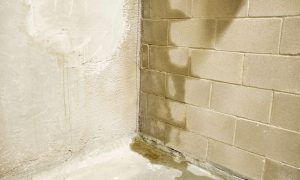
In addition to checking for cracks in your foundation and clogged gutters and downspouts, be sure to check for any other potential water sources. This includes leaks in your plumbing, cracks in your walls, and gaps around doors and windows. Any of these can be potential sources of a leaky basement.
3. After identifying the source of the leak, it’s time to take action
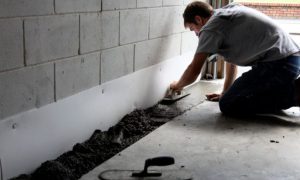
If the leak is coming from a crack in your foundation, the best way to fix it is by using hydraulic cement. This type of cement is designed to expand as it dries, so it can fill any cracks or voids in your foundation and stop water from seeping through it.
If the leakage is coming from your gutters or downspouts, the problem is likely that they are clogged or blocked. Start by cleaning out any debris that has accumulated in your gutters. Then, check your downspouts to make sure they are clear and free of obstructions.
4. You may need to waterproof your basement from the inside in certain situations
If you’ve tried all of the above tips, such as applying hydraulic cement and your basement is still leaking, it may be time to waterproof it from the inside. Most people think of waterproofing their basement from the outside, but did you know that in some situations, it may make more sense to waterproof your basement from the inside?
By sealing the cracks and gaps from the inside, various products, such as sealants, tarps, or plastic sheets. You can create a barrier against water leakage. Not only is this method more effective, but it also prevents any future damage to your home’s foundation.
So if you’re looking for a way to keep your basement dry, don’t forget to consider waterproofing from the inside. Waterproofing your basement will help to keep it dry and prevent further water damage.
5. Use a sump pump to remove water from the basement
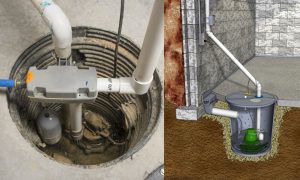
You return home from work, open the door to your basement, and are immediately greeted by a dank smell and waterlogged carpet. Your basement is flooded, and you have no idea what to do.
Before you start panicking, take a deep breath and remember that you have a sump pump. Sump pumps are designed to remove water from basements, and they can be a lifesaver in situations like this.
How to use the sump pump?
Connect the pump to a water source and switch it on, and the pump will start removing water from your basement. In no time, your basement will be dry and look as good as new.
So don’t wait until your basement is already flooded to buy a sump pump – make sure you have one on hand in case of emergencies. It could end up being the best purchase you ever make.
6. For the best outcome. install a water drainage system in the basement
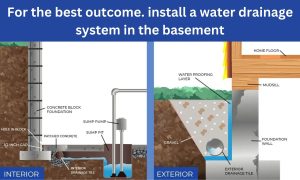
Basements are notorious for being damp and musty. This is because they are located underground and typically do not have proper ventilation or drainage. As a result, basements are often susceptible to flooding.
Installing a drainage system in the basement is the best way to protect your home from water damage. A water drainage system will stop your basement from flooding by collecting and removing the water.
In addition, a water drainage system will also help to improve the air quality in the basement by removing excess moisture. Basements with proper drainage systems are less likely to develop mold and mildew, making them more comfortable and healthy places to live.
So, for the best outcome, install a water drainage system in the basement to remove water from the basement.
7. Know when to call in a professional
If you’ve tried all of the above tips and your basement is still leaking, it may be time to call in a professional. A professional can help to identify the source of the leak and take steps to fix it.
8. Prepare your basement for heavy rains or storms

If you live in an area that is prone to heavy rains or storms, it’s important to be prepared for the possibility of a flood. To do this, you should have a plan in place for how to deal with any water that does enter your basement.
This may include using sandbags or other barriers to help keep water out or having a pump on hand to remove any water entering the basement. By being prepared, you can help to minimize the damage caused by a flood and make cleanup much easier.
9. Take steps to prevent future leaks
No one likes dealing with a leaky basement. Not only is it a pain to clean up, but it can also cause long-term damage to your home. Fortunately, there are a few preventive steps you can take to minimize the risk of future leaks.
Preventive tips:
Once you’ve fixed the leak, it’s important to take measures to prevent it from happening again in the future.
For example, if your gutters and downspouts were the cause of the leak, be sure to clean them out on a regular basis (at least once a month) to prevent debris from building up and causing problems in the future.
It’s also a good idea to check your foundation for cracks on a regular basis and repair any that you find as soon as possible.
By taking these preventive measures, you can help keep your basement dry and avoid the headache of another leak in the future.
10. Be prepared for the cost of repairs
No one likes to think about the possibility of their basement flooding, but it’s a reality that many homeowners face. Depending on the extent of the damage, fixing a leaky basement can be a costly endeavor. Be sure to set aside enough money to cover the cost of any repairs that need to be made.
How Much Does It Cost to Seal a Leaking Basement?
Are you sick of feeling like your home is slowly swamped by water every time it rains? Well, you’re not alone. A leaking basement is a common problem that many homeowners face. But what many people don’t realize is that sealing a leaking basement can be a costly affair.
The average cost of sealing a leaking basement ranges from $500 to $4,000. But the cost can go even higher if the damage is extensive. If you’re thinking of sealing your leaking basement, then you need to be prepared to spend a pretty penny. But the good news is that it will be worth it in the long run.
A sealed basement will not only improve the value of your home but also protect your belongings from water damage. So, if you’re ready to invest in your home, sealing your leaking basement is a great place to start.
Final Thoughts:
Fixing a leaking basement can seem daunting, but with the right tips and some know-how, it can be a relatively easy fix. We’ve gathered some of the best tips from experts in the field to help you start your repair project. Be sure to visit our blog regularly for more helpful advice and information on fixing your home.

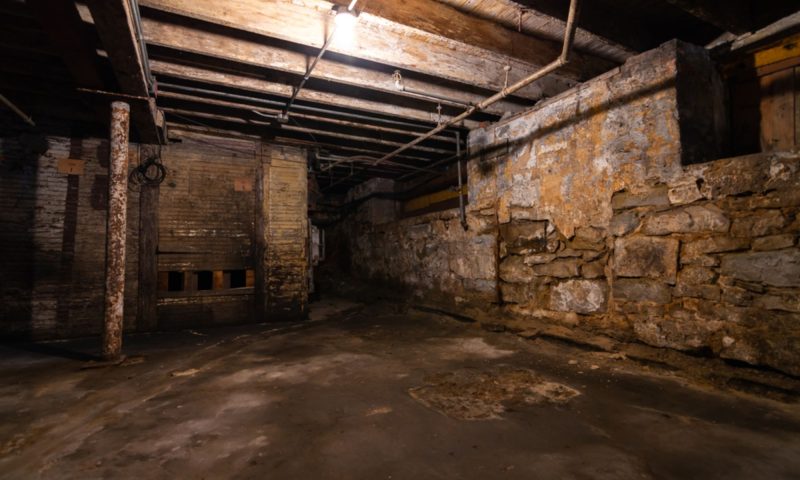
1 thought on “How To Fix A Leaky Basement: 10 Proven Tips”
Comments are closed.